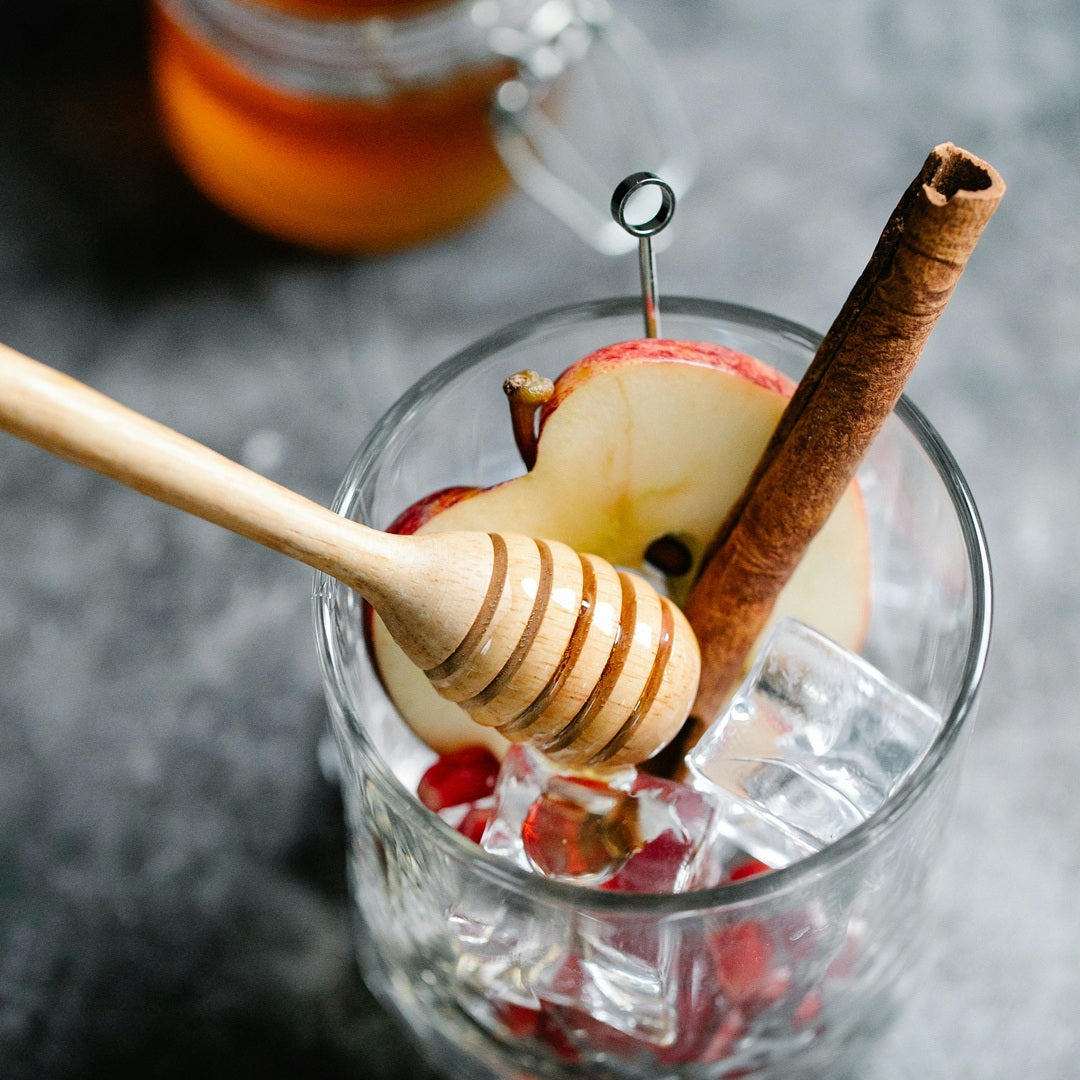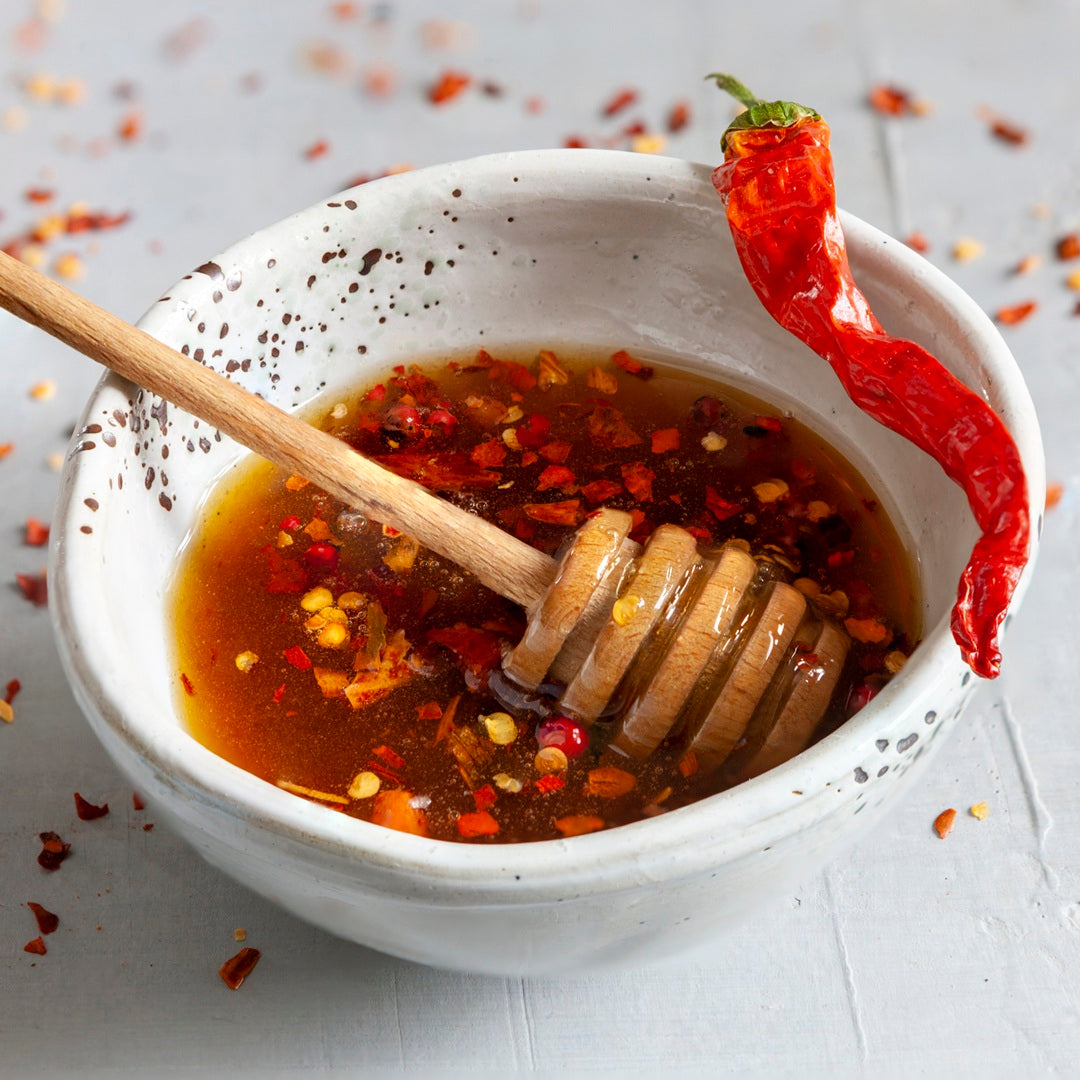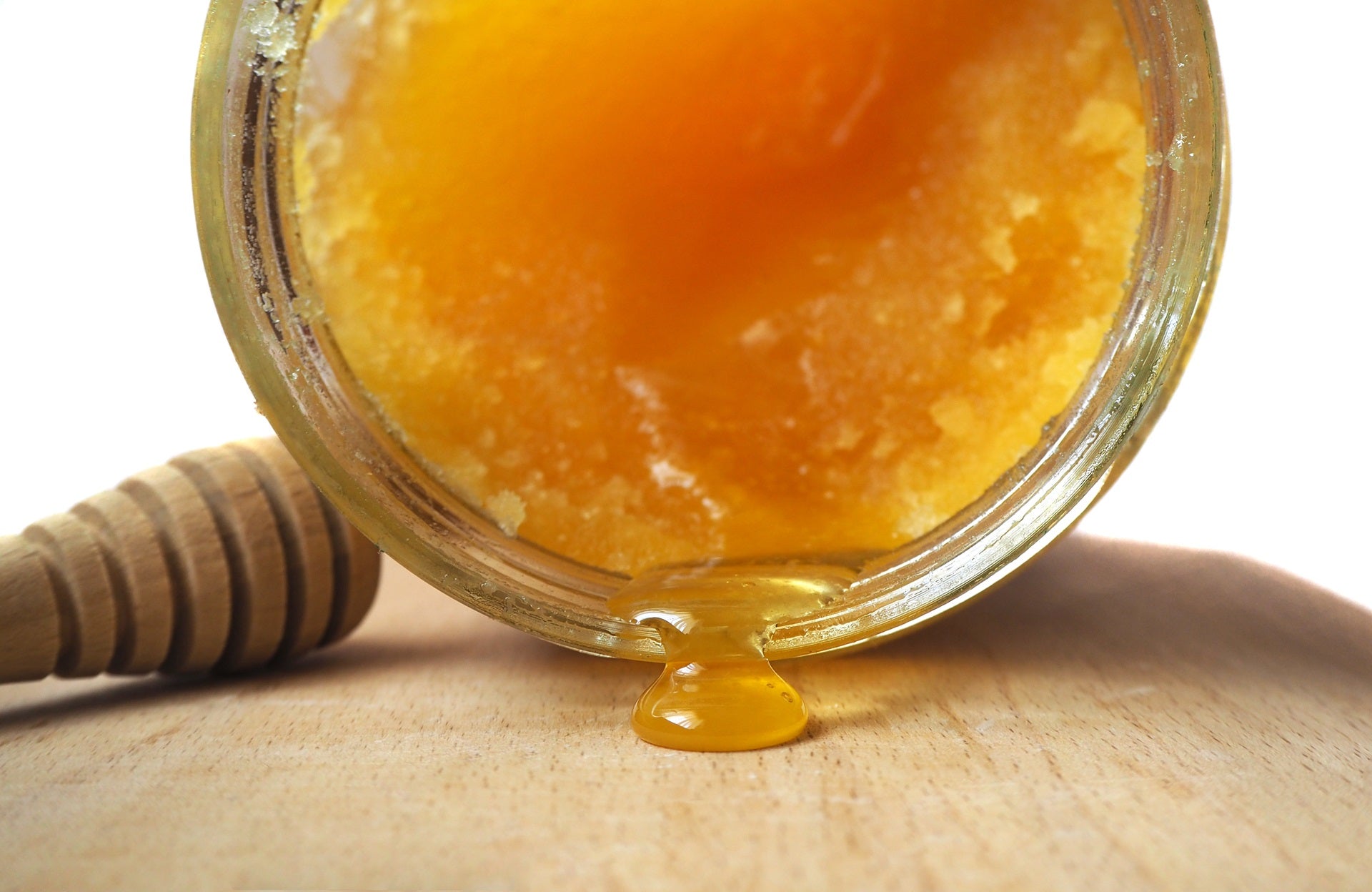Tips and Tricks
Explore quick tips below for using honey in every day life.
Honey in Beverages

Collapsible content
Quick Honey Syrup
Mix equal parts honey and warm water to create a thinner, pourable syrup for cocktails, pancakes, or drizzling over yogurt.
Balance Citrus Acidity
A spoonful of honey in citrus-based drinks (like lemon water or orange juice) smooths out tartness.
Dissolve with Warm Water
Honey blends best in warm liquids. If using it in a cold drink, dissolve it in a small amount of warm water first.
Rim Your Glass
Swap out the traditional salt rim by brushing a thin layer of honey on the rim of your glass, then dipping it in crushed nuts, spices, or flavored salt for a unique twist. This works especially well for drinks like a Margarita with a honey-Tajín rim or a Bee’s Knees with a honey-lavender sugar rim.
Healthful Combinations
Consider the following combinations to enhance the effectiveness of honey in treating symptoms related to colds and allergies:
- Ginger – Can help soothe a sore throat and reduce congestion.
- Lemon – Rich in Vitamin C, helps boost the immune system, aids in detoxifying, and relieves throat irritation.
- Cinnamon – With its antibacterial and antifungal properties, can help reduce inflammation and fight off infections.
- Peppermint – Contains menthol, which can help clear nasal congestion and act as a natural decongestant.
- Echinacea – Known to stimulate the immune system, can help fight off infections and reduce the severity of cold symptoms.
- Turmeric – With its powerful anti-inflammatory and antioxidant properties, can help reduce swelling and ease discomfort caused by colds or allergies.
- Licorice Root – Helps soothe sore throats and reduce coughing, providing relief from respiratory issues often associated with colds.
- Clove – Contains anti-inflammatory compounds that can help relieve sore throats and act as a natural expectorant to ease coughs.
Tips for Cooking

Collapsible content
Swap Sugar for Honey
Honey adds natural sweetness with a hint of floral flavor. When substituting for sugar, use ¾ cup of honey for every 1 cup of sugar and reduce other liquids in the recipe by about ¼ cup to balance moisture.
How to Prevent Sticky Messes
Honey can be tricky to measure and pour. Lightly coat your measuring spoon or cup with oil or warm water before adding honey. This will help it to slide right out without sticking!
Lower Your Baking Temperature
Honey tends to caramelize faster than sugar, so when baking with it, reduce the oven temperature by about 25°F (15°C) to prevent over-browning.
Create a Spreadable Texture
Blend honey in a food processor or whip it with a hand mixer to create a creamy, spreadable consistency for toast and biscuits.
Honey Crystallization

Collapsible content
What is Crystallization
The thickening of your honey over time is a natural process called crystallization. This occurs when the glucose in the honey separates from the water and forms tiny crystals, causing the honey to become thicker and less flowy.
What Contributes to Crystallization
Sugar Composition: Honey with a higher glucose-to-fructose ratio crystallizes faster.
Temperature: Honey stored at cooler temperatures (between 50°F and 57°F, or 10°C to 14°C) tends to crystallize more quickly.
Moisture Content: Honey with a low moisture content may crystallize faster, as the sugar concentration is higher.
Presence of Fine Particles: Small particles like pollen grains or tiny air bubbles in the honey can encourage crystal formation.
Time: Over time, all natural honey will crystallize to some degree, especially if it is raw and unprocessed, as it retains its natural sugars and particles.
Is Crystallized Honey Safe to Eat
Crystallized honey is still perfectly safe and delicious to eat—it just has a different texture! Some people even prefer it for spreading on toast or using in recipes.
How to Restore Honey Consistency
If you'd like to restore your honey to its original flowing consistency, you can gently warm it:
- Place the honey jar in a warm water bath (not exceeding 100–110°F or 37–43°C) and stir occasionally.
- Avoid using direct heat or microwaving, as this can degrade the honey's quality and beneficial enzymes.
